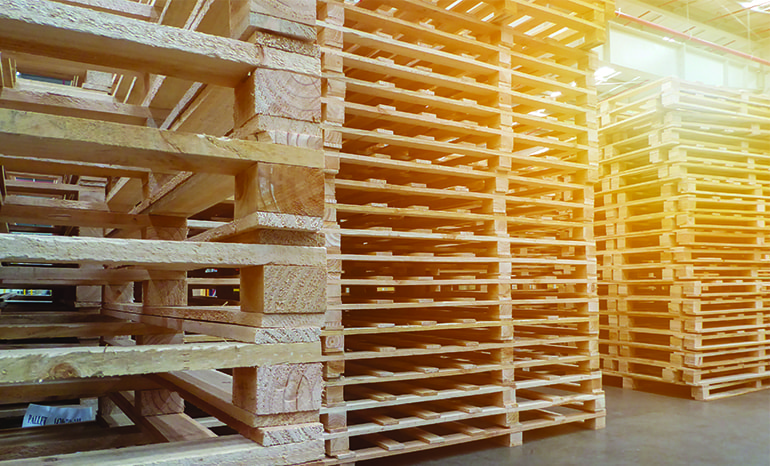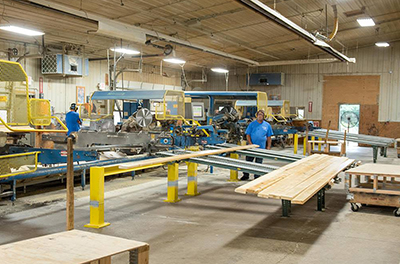How it’s Made – Wood Pallets
Perhaps you have heard of or watched the show How It’s Made on the Discovery Channel. The show gives viewers...
Perhaps you have heard of or watched the show How It’s Made on the Discovery Channel. The show gives viewers...

Perhaps you have heard of or watched the show How It’s Made on the Discovery Channel. The show gives viewers a look behind the scenes at how everyday things are manufactured. We thought we’d model that idea in this post by providing our readers with a brief summary of how wood pallets are made.
Get an inside look at how wooden pallets are made from the experts at Rose Pallet.
All pallets are made from the core of a tree; but, because the lumber used to make pallets is a mixture of hardwood or softwood species, pallet producers usually cannot specify the type of wood. However, there are two species of wood found in high proportion in pallet lumber mixtures used to manufacture pallets. These are oak and southern yellow pine (or SYP for short).
Oak is used because of its strength and wide availability. There is often a surplus of oak leftover from markets such as housing or furniture construction, which is then used in pallet production. Because it is considered a high-density hardwood, oak is ideal for pallets that must haul heavier loads of fragile goods.
Pine is also commonly used in pallets because softwoods tend to be more consistent in weight than hardwoods, giving the product a high strength to weight ratio. Softwoods are also easier to dry, which helps prevent contamination from fungi, molds, or other pests. For this reason, pallets produced with a mixture containing SYP are ideal for industries such as pharmaceuticals or food and beverage where pallet cleanliness is paramount.

Pallet cants from local sawmills are trimmed to the proper length, ripped into boards, and sawn into the proper-sized deck boards and stringers for whatever type of pallet is needed. Next, notches can be cut into stringers to allow 4-way entry with forklifts or 2-way entry with pallet jacks. If the pallet will be used for international shipping or in sanitary applications, the wood may be treated prior to assembly.
Finally, it’s time to put the pieces together. This can be done by hand with pneumatic nailers and staplers (for small orders—typically less than 200 units) or, more commonly, by automated machines that can nail together and produce pallets at high volumes. There is a wide variety of machinery on the market, including board stackers, pallet nailers, pallet stackers, robotic dismantlers, and saws to help maximize production and efficiency.
If you’re interested to learn more about pallet manufacturing, you can view the process first-hand during the NWPCA’s Annual Plant Tours. It’s a great opportunity to network and learn about automation advancements affecting wood packaging.
For all of your standard and non-standard pallet needs, contact the pros at Rose Pallet. We’re here to help you for the long haul.
 Feb 03, 2021
Feb 03, 2021
If 2020 taught us anything, it was how to embrace change. Oftentimes we resist it because we are faced with a new routine or habit. But the act of changing can also deepen an investment or commitment. At Rose Pallet, change has strengthened how we do business.
continue reading double_arrow May 26, 2021
May 26, 2021
As business and consumer confidence rebounds so does the demand for a variety of goods and pallets on which to ship them. Finding the right pallet vendor, however, requires more than an internet search. Here’s what you should know…
continue reading double_arrow







3 thoughts on “How it’s Made – Wood Pallets”
Comments are closed.